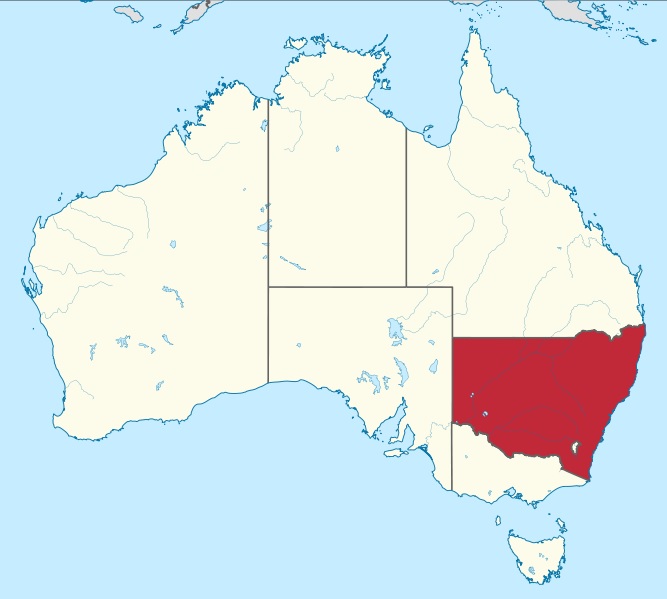New South Wales
The First State

In 1770 James Cook conducted a survey along the unmapped eastern coast of Dutch New Holland. Sovereignty was very much in dispute, so he named the area New Wales, which was later changed to New South Wales. The survey must have been received with approval by the admiralty because in 1788 the "First Fleet" arrived led by captain Arthur Phillip with boatloads of settlers, bunny rabbits and prisoners. The colony of New South Wales comprised half of the Australian mainland, all of New Zealand and Van Dieman's Land, Lord Howe Island and Norfolk Island. Captain Phillip remained as governor until 1792.
There were two intervening governors, but then in 1806 along came the new governor, captain William Bligh. He was chosen because of his approach to managing people - tough but fair.
You may remember captain Bligh from his previous expedition to bring bread plants to the sugar plantations in the West Indies, as a cheap source of food for the slaves. His ship was aptly named The Bounty. During the year it took Bounty to leave England and limp into Tahiti to commence gathering plants, Bligh prided himself on keeping his crew healthy and safe while dealing out "hardly any" punishments.
It took five months to gather sufficient breadfruit plants in Tahiti to start a plantation in the West Indies. During this time the sailors became fans of the Tahitian society and lifestyle and young women, while Bligh himself was shocked to his puritanical soul at the Tahitian people and the "uncommon ways they have of gratifying their beastly inclinations".
Soon enough it came time to leave the island paradise for the somewhat austere and cramped accommodations on board ship (a lot of the ship had been converted into a greenhouse and it was small to begin with). Three days after leaving Tahiti there was a bit of a ruckus over a stolen coconut. Tensions were such that this escalated. The Bounty returned to Tahiti and thence to Pitcairn Island. The seven meter launch, captain Bligh, 18 loyalists, enough provisions for 5 days and a hand's breadth of freeboard all set sail for the Dutch West Indies, 3,618 miles away. And they made it.
So now it's seventeen years later. During those seventeen years, the New South Wales Corps, or the Rum Corps as they were more widely known, had been both the military presence and purveyors of the finest illegal rum in the area. Captain Bligh, who had a reputation of having a firm hand with subordinates, was sent in as the governor to rein in the military and their monopoly over the rum trade.
Things did not go well. To gloss over a lot of history, there was a military coup and Bligh found himself a prisoner for a year before everything kind of sorted itself out, with Major-General Lachlan Macquarie taking over as the new governor.
Over the years, the colony, and later, state, of New South Wales hived off bits of itself to form Queensland, Tasmania, New Zealand, Victoria, South Australia, the Northern Territory and Norfolk Island.
So that's likely more than you ever wanted to know about New South Wales. We'll start our journey into the First State with a visit to about the most expensive island ever, Lord Howe.